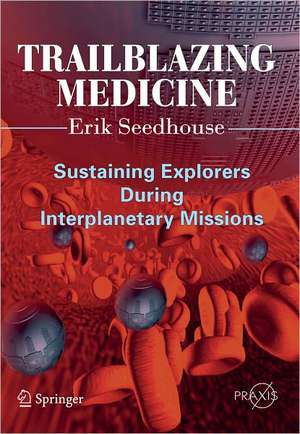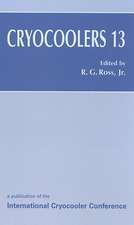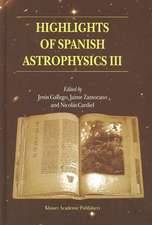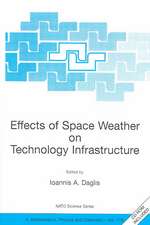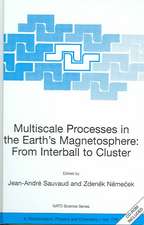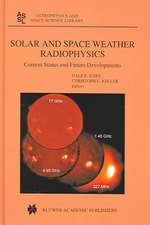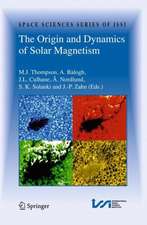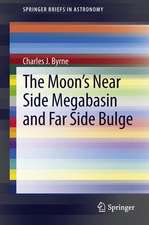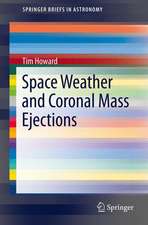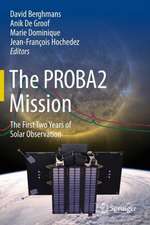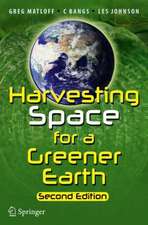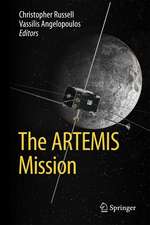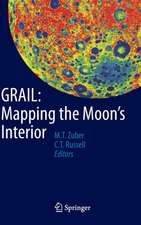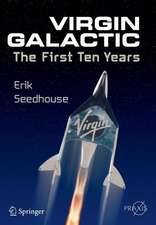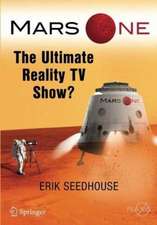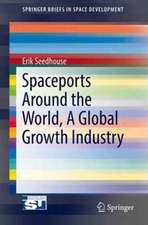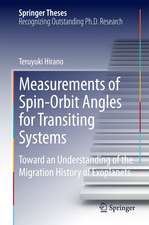Trailblazing Medicine: Sustaining Explorers During Interplanetary Missions: Springer Praxis Books
Autor Erik Seedhouseen Limba Engleză Paperback – 6 mai 2011
Din seria Springer Praxis Books
-
 Preț: 294.46 lei
Preț: 294.46 lei -
 Preț: 223.45 lei
Preț: 223.45 lei -
 Preț: 193.12 lei
Preț: 193.12 lei -
 Preț: 167.85 lei
Preț: 167.85 lei -
 Preț: 288.98 lei
Preț: 288.98 lei -
 Preț: 323.74 lei
Preț: 323.74 lei -
 Preț: 401.38 lei
Preț: 401.38 lei -
 Preț: 264.12 lei
Preț: 264.12 lei - 8%
 Preț: 513.00 lei
Preț: 513.00 lei -
 Preț: 190.01 lei
Preț: 190.01 lei -
 Preț: 218.16 lei
Preț: 218.16 lei -
 Preț: 312.06 lei
Preț: 312.06 lei - 17%
 Preț: 414.04 lei
Preț: 414.04 lei -
 Preț: 216.41 lei
Preț: 216.41 lei -
 Preț: 262.27 lei
Preț: 262.27 lei -
 Preț: 264.35 lei
Preț: 264.35 lei -
 Preț: 167.63 lei
Preț: 167.63 lei -
 Preț: 284.81 lei
Preț: 284.81 lei -
 Preț: 259.08 lei
Preț: 259.08 lei -
 Preț: 305.47 lei
Preț: 305.47 lei -
 Preț: 244.14 lei
Preț: 244.14 lei -
 Preț: 227.85 lei
Preț: 227.85 lei -
 Preț: 285.25 lei
Preț: 285.25 lei -
 Preț: 295.56 lei
Preț: 295.56 lei -
 Preț: 357.17 lei
Preț: 357.17 lei -
 Preț: 275.79 lei
Preț: 275.79 lei -
 Preț: 257.08 lei
Preț: 257.08 lei -
 Preț: 349.71 lei
Preț: 349.71 lei -
 Preț: 272.45 lei
Preț: 272.45 lei -
 Preț: 270.27 lei
Preț: 270.27 lei - 8%
 Preț: 456.51 lei
Preț: 456.51 lei -
 Preț: 352.34 lei
Preț: 352.34 lei - 8%
 Preț: 394.80 lei
Preț: 394.80 lei -
 Preț: 320.65 lei
Preț: 320.65 lei -
 Preț: 325.29 lei
Preț: 325.29 lei -
 Preț: 253.11 lei
Preț: 253.11 lei -
 Preț: 192.86 lei
Preț: 192.86 lei -
 Preț: 313.40 lei
Preț: 313.40 lei -
 Preț: 150.51 lei
Preț: 150.51 lei -
 Preț: 233.34 lei
Preț: 233.34 lei -
 Preț: 286.78 lei
Preț: 286.78 lei -
 Preț: 212.01 lei
Preț: 212.01 lei -
 Preț: 366.83 lei
Preț: 366.83 lei -
 Preț: 299.99 lei
Preț: 299.99 lei -
 Preț: 232.27 lei
Preț: 232.27 lei -
 Preț: 284.58 lei
Preț: 284.58 lei -
 Preț: 212.45 lei
Preț: 212.45 lei -
 Preț: 159.81 lei
Preț: 159.81 lei -
 Preț: 349.48 lei
Preț: 349.48 lei - 20%
 Preț: 2061.61 lei
Preț: 2061.61 lei
Preț: 215.30 lei
Nou
Puncte Express: 323
Preț estimativ în valută:
41.20€ • 43.01$ • 34.10£
41.20€ • 43.01$ • 34.10£
Carte disponibilă
Livrare economică 14-28 martie
Preluare comenzi: 021 569.72.76
Specificații
ISBN-13: 9781441978288
ISBN-10: 1441978283
Pagini: 208
Ilustrații: XXVI, 180 p. 56 illus., 41 illus. in color.
Dimensiuni: 160 x 240 x 15 mm
Greutate: 0.48 kg
Ediția:2011
Editura: Springer
Colecția Springer
Seriile Springer Praxis Books, Space Exploration
Locul publicării:New York, NY, United States
ISBN-10: 1441978283
Pagini: 208
Ilustrații: XXVI, 180 p. 56 illus., 41 illus. in color.
Dimensiuni: 160 x 240 x 15 mm
Greutate: 0.48 kg
Ediția:2011
Editura: Springer
Colecția Springer
Seriile Springer Praxis Books, Space Exploration
Locul publicării:New York, NY, United States
Public țintă
Popular/generalCuprins
Preface.- Acknowledgements.- About the Author.- List of Figures.- List of Tables.- List of Panels.- List of abbreviations and acronyms.- Section I: Space Medicine.- Chapter 1: Medicine onboard the International Space Station.- Chapter 2: Interplanetary health care.- Chapter 3: Medical qualification for exploration class missions.- Section II: Exploration Class Medical Challenges.- Chapter 4: Radiation.- Chapter 5: Bone Loss.- Chapter 6: Behavior and performance.- Section III: Future Developments.- Chapter 7: Bioethics, sex, and cloning.- Chapter 8: Robotic surgery and telemedicine.- Chapter 9: Stasis.- Appendix: The Interplanetary Bioethics Manual.- Index.
Notă biografică
Erik Seedhouse is an aerospace scientist whose ambition has always been to work as an astronaut. After completing his first degree in Sports Science at Northumbira University, the author joined the legendary 2nd Battalion the Parachute Regiment, the world's most elite airborne regiment. During his time in the "Para's," Erik spent six months in Belize, where he was trained in the art of jungle warfare and conducted several border patrol along the Belize-Guatemala border. Later, he spent several months learning the intricacies of desert warfare on the Akamas Range in Cyprus. He made more than 30 jumps from a Hercules C130 aircraft, performed more than 200 abseils from a helicopter, and fired more light anti-tank weapons than he cares to remember!
Upon returning to the comparatively mundane world of academia, the author embarked upon a master's degree in Medical Science at Sheffield University. He supported his master's degree studies by winning prize money in 100 km ultradistance running races. Shortly after placing third in the World 100 km Championships in 1992 and setting the North America 100 km record, the author turned to ultradistance triathlon, winning the World Endurance Triathlon Championships in 1995 and 1996. For good measure, he also won the inaugural World Double Ironman Championships in 1995 and the infamous Decatriathlon, the world's longest triathlon.
Returning in academia once again in 1996, Erik pursued his Ph.D at the German Space Agency's Institute for Space Medicine. While conducting his Ph.D. studies, he still found time to win Ultraman Hawaii and the European Ultraman Champion-ships as well as completing the Race Across America bike race. Due to his success as the world's ultradistance triathlete, Erik was featured in dozens of magazines and television interviews. In 1997, GQ magazine nominated him as the "Fittest Man in the World."
In 1999, Erik decided it was time to get a real job. He retired from being aprofessional triathlete and started his post-doctoral studies at Vancouver's Simon Fraser University's School of Kinesiology. In 2005, the author worked as an astronaut training consultant for Bigelow Aerospace in Las Vegas and wrote 'Tourists in Space,' a training manual for spacefligth participants. He is a Fellow of the British Interplanetary Society and a member of the Aerospace Medical Association. Recently, he was one of the final 30 candidates of the Canadian Space Agency Astronaut Recruitment Campaign. Erik currently works as a manned spaceflight consultant, triatholn coach, and author. He is the Training Director for Astronauts for Hire and plans to travel into space with one of the private spaceflight companies.
In addition to being a triathlete, sky-diver, pilot, and author, Erik is an avid scuba-diver and mountaineer and is currently pursuing his goal of climbing the Seven Summits. 'Trailblazing Medicine' is his seventh book.
Upon returning to the comparatively mundane world of academia, the author embarked upon a master's degree in Medical Science at Sheffield University. He supported his master's degree studies by winning prize money in 100 km ultradistance running races. Shortly after placing third in the World 100 km Championships in 1992 and setting the North America 100 km record, the author turned to ultradistance triathlon, winning the World Endurance Triathlon Championships in 1995 and 1996. For good measure, he also won the inaugural World Double Ironman Championships in 1995 and the infamous Decatriathlon, the world's longest triathlon.
Returning in academia once again in 1996, Erik pursued his Ph.D at the German Space Agency's Institute for Space Medicine. While conducting his Ph.D. studies, he still found time to win Ultraman Hawaii and the European Ultraman Champion-ships as well as completing the Race Across America bike race. Due to his success as the world's ultradistance triathlete, Erik was featured in dozens of magazines and television interviews. In 1997, GQ magazine nominated him as the "Fittest Man in the World."
In 1999, Erik decided it was time to get a real job. He retired from being aprofessional triathlete and started his post-doctoral studies at Vancouver's Simon Fraser University's School of Kinesiology. In 2005, the author worked as an astronaut training consultant for Bigelow Aerospace in Las Vegas and wrote 'Tourists in Space,' a training manual for spacefligth participants. He is a Fellow of the British Interplanetary Society and a member of the Aerospace Medical Association. Recently, he was one of the final 30 candidates of the Canadian Space Agency Astronaut Recruitment Campaign. Erik currently works as a manned spaceflight consultant, triatholn coach, and author. He is the Training Director for Astronauts for Hire and plans to travel into space with one of the private spaceflight companies.
In addition to being a triathlete, sky-diver, pilot, and author, Erik is an avid scuba-diver and mountaineer and is currently pursuing his goal of climbing the Seven Summits. 'Trailblazing Medicine' is his seventh book.
Textul de pe ultima copertă
To prepare for the day when astronauts leave low-Earth orbit for long-duration exploration missions, space medicine experts must develop a thorough understanding of the effects of microgravity on the human body, as well as ways of mitigating them. To gain a complete understanding of the effects of space on the human body and to create tools and technologies required for successful exploration, space medicince will become an increasingly collaborative discipline incorporating the skills of physicians, biomedical scientists, engineers, and mission planners.
Trailblazing Medicine
Trailblazing Medicine
- examines the future of space medicine in relation to human space exploration;
- describes what is necessary to keep a crew alive in space, including the use of surgical robots, surface-based telemedicine, and remote emergency care;
- discusses bioethical problems such as euthanasia, sex, and precautionary surgery;
- investigates the medical challenges faced by interplanetary astronauts;
- details the process of human hibernation.
Caracteristici
Examines the current and future issues concerning the health and treatment of medical conditions of people in space Describes medical selection standards for astronauts on future missions to Mars and the outer planets Discusses likely human hibernation conditions for space travelers during Exploration Class missions Includes supplementary material: sn.pub/extras
